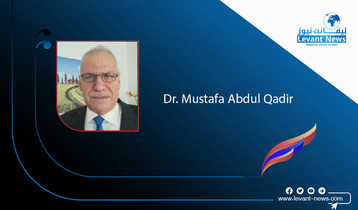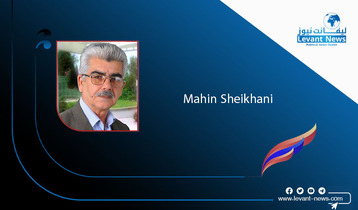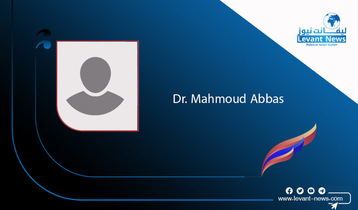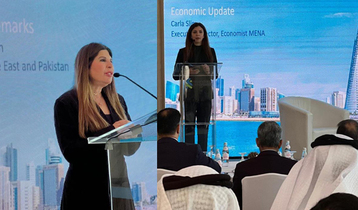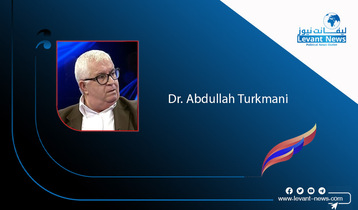-
In memory of Marie Colvin

#RememberingMarie
Last week (February 22) marked the 10th anniversary of the death of Marie Colvin, the American journalist killed while covering the war in Syria for the British Sunday Times newspaper. This sad day is an opportunity to remember her and other correspondents who lost their lives while reporting on conflicts in the Middle East and beyond across a turbulent world.
Marie died in the besieged city of Homs where rebel forces were resisting the army of President Bashar al-Assad. Back in 2019, after a court case, her family blamed the Syrian government for her assassination, awarding them $300 million in damages. She was killed by an improvised explosive device along with French photographer Remi Ochlik. She was 56.
Born in the US state of New York and educated at Yale University, her career encompassed United Press International (UPI) and then the Sunday Times, which she joined in 1985. From 1986, she was the newspaper's Middle East correspondent, and then from 1995 was foreign affairs correspondent.
In 1986, Colvin had her first major scoop when she was the first journalist to interview Libya’s leader Muammar Gaddafi after US planes bombed Tripoli. Gaddafi also said reconciliation between Libya and the US was impossible so long as Ronald Reagan was in the White House. "I have nothing to say to him (Reagan)", he said, "because he is mad. He is foolish. He is an Israeli dog.” I was then in Libya covering the crisis for the Guardian and that was when I first met Colvin.
Marie became a friend. We knew a good deal of the same people, mostly other journalists. The last time we met before she died was in Tripoli again in the aftermath of the Arab Spring uprising against Gaddafi in October 2011. We had a meal together in the centre of the Libyan capital with other colleagues.
She also covered conflicts in Chechnya, Kosovo, Sierra Leone, Zimbabwe, Sri Lanka and East Timor. It was there in 1999 that she was credited with saving the lives of 1,500 women and children from a compound besieged by Indonesian-backed forces. Refusing to abandon them, she stayed with a UN force reporting in her newspaper and on television. They were evacuated after four days.
In April 2001 Colvin lost the sight in her left eye while reporting on the Sri Lankan civil war when she was struck by a blast from a by rocket-propelled grenade while crossing from a Tamil Tigers-controlled area to government territory. She was attacked even after calling out "journalist, journalist!"
Despite sustaining serious injuries, Colvin, who was 45 at the time, managed to write a 3,000 word article in time to meet her deadline. She had walked over 30 miles through the jungle with her Tamil guides to evade government troops; she reported on the humanitarian disaster in the northern Tamil region, including a government blockade of food, medical supplies and prevention of foreign journalists access to the area for six years to cover the war.
Colvin later suffered from post-traumatic stress disorder (PTSD) and required hospitalisation following her injuries. Following her death in 2012 the Sunday Times faced criticism that she should not have been sent to Syria at all because of that condition.
Marie was very glamorous and hard-drinking. The eyepatch she wore for parties after her Sri Lanka injury was studded with rhinestones. She was also very brave. Detractors described her as foolhardy and irresponsible. She went back to Homs after being ordered by her newspaper to leave Syria via the Lebanese border.
Whenever Marie drove herself and her collaborators further, she believed that she was alleviating suffering. Sometimes she was, but she was also looking for a good story and fleeing the most recent chaos she had left behind at home. Her personal life was very unsettled. She was married three times
Colvin will forever by associated with covering conflicts and prioritizing interviewing ordinary people suffering from them, which she learnt from her heroine, Martha Gellhorn, the even more famous world war two American journalist.
Two friends established the Marie Colvin Journalist Network (MCJN) to provide support for local journalists in conflict zones often with no access to international assistance. MCJN’s focus is on the Middle East and North Africa, where women are often vulnerable to societal pressures, harassment and prejudice as well as the problems caused by governments and militias.
“Where would Marie Colvin have been last week, as President Putin gathered his forces on the borders of Ukraine, ready to strike?,” wrote her friend and biographer Lindsay Hilsum, a Channel 4 TV correspondent, in the Sunday Times on February 20, two days before the 10th anniversary of her death.
“Probably in some freezing trench with Ukrainian soldiers, learning far more about them than she could ever fit into a single Sunday Times dispatch. Or maybe she would have tried to sneak into Russian-held Crimea, in search of the untold story of Russian conscripts readying for war — her editors and friends beside themselves with worry. Marie had no regard for borders, or any kind of limit really. That’s why she’s not with us today.”

BY: IAN BLACK
You May Also Like
Popular Posts
Caricature
BENEFIT Sponsors BuildHer...
- April 23, 2025
BENEFIT, the Kingdom’s innovator and leading company in Fintech and electronic financial transactions service, has sponsored the BuildHer CityHack 2025 Hackathon, a two-day event spearheaded by the College of Engineering and Technology at the Royal University for Women (RUW).
Aimed at secondary school students, the event brought together a distinguished group of academic professionals and technology experts to mentor and inspire young participants.
More than 100 high school students from across the Kingdom of Bahrain took part in the hackathon, which featured an intensive programme of training workshops and hands-on sessions. These activities were tailored to enhance participants’ critical thinking, collaborative problem-solving, and team-building capabilities, while also encouraging the development of practical and sustainable solutions to contemporary challenges using modern technological tools.
BENEFIT’s Chief Executive Mr. Abdulwahed AlJanahi, commented: “Our support for this educational hackathon reflects our long-term strategic vision to nurture the talents of emerging national youth and empower the next generation of accomplished female leaders in technology. By fostering creativity and innovation, we aim to contribute meaningfully to Bahrain’s comprehensive development goals and align with the aspirations outlined in the Kingdom’s Vision 2030—an ambition in which BENEFIT plays a central role.”
Professor Riyadh Yousif Hamzah, President of the Royal University for Women, commented: “This initiative reflects our commitment to advancing women in STEM fields. We're cultivating a generation of creative, solution-driven female leaders who will drive national development. Our partnership with BENEFIT exemplifies the powerful synergy between academia and private sector in supporting educational innovation.”
Hanan Abdulla Hasan, Senior Manager, PR & Communication at BENEFIT, said: “We are honoured to collaborate with RUW in supporting this remarkable technology-focused event. It highlights our commitment to social responsibility, and our ongoing efforts to enhance the digital and innovation capabilities of young Bahraini women and foster their ability to harness technological tools in the service of a smarter, more sustainable future.”
For his part, Dr. Humam ElAgha, Acting Dean of the College of Engineering and Technology at the University, said: “BuildHer CityHack 2025 embodies our hands-on approach to education. By tackling real-world problems through creative thinking and sustainable solutions, we're preparing women to thrive in the knowledge economy – a cornerstone of the University's vision.”
opinion
Report
ads
Newsletter
Subscribe to our mailing list to get the new updates!

